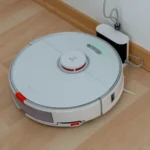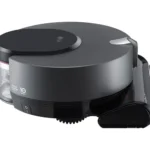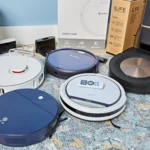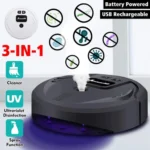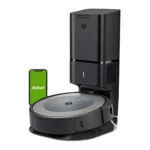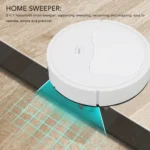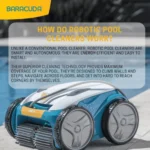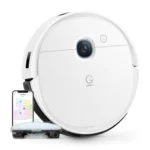Imagine being able to clean your house without lifting a finger. With the advent of smart home technology, this has become a reality. One of the most popular smart cleaning devices is the smart vacuum cleaner, which not only saves you time and effort but also offers various benefits. But have you ever wondered about the difference between a smart vacuum cleaner and a traditional one? Specifically, have you considered the importance of their dustbins? In this article, we will explore the benefits of a smart vacuum cleaner’s dustbin and how it compares to the traditional vacuum cleaner dustbag. We will also provide tips on how to choose, clean, and maintain your smart vacuum cleaner’s dustbin for optimal performance. Let’s delve into the world of smart home cleaning and discover the perks of technology.
What is a Smart Vacuum Cleaner’s Dustbin?
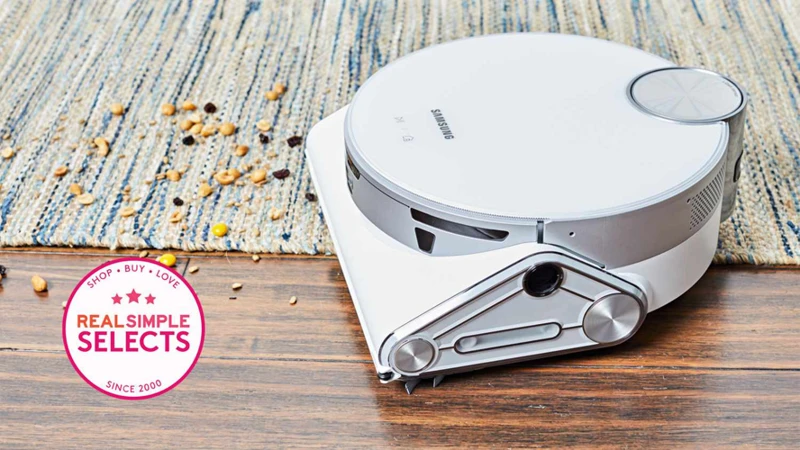
When it comes to modern cleaning equipment, the smart vacuum cleaner undoubtedly stands out from the crowd. Unlike traditional vacuum cleaners, smart vacuum cleaners come equipped with a dustbin, which replaces the need for disposable dustbags. This dustbin, also known as a dirt canister, is an integrated part of the device that collects all the dust, debris, and dirt.
The dustbin in a smart vacuum cleaner works by using suction power to collect dirt and debris from the floor. The dirt is then transported via a motorized brush, or through suction power alone, into the dustbin. The dustbin is designed to be removable, which makes it easy to empty.
Smart vacuum cleaners come with different types of dustbins, each with its own design and features. Some dustbins come with advanced filtration systems that capture small particles to reduce allergens, while some have a large capacity to allow for extended cleaning without the need for emptying the bin. Some of the latest models have even introduced self-emptying dustbins, which minimize the need for human interaction with the dustbin.
The dustbin in a smart vacuum cleaner makes it a very convenient and eco-friendly cleaning tool. It reduces the need for buying and replacing disposable dustbags, which saves both money and the environment. However, it is important to note that the dustbin can also become full and clogged, affecting the smart vacuum cleaner’s cleaning ability. Be sure to follow proper maintenance and cleaning procedures to get the most out of your smart vacuum cleaner’s dustbin. For more information, check out our smart vacuum dustbin guide for tips and troubleshooting advice.
How Does It Work?
If you’re wondering how a smart vacuum cleaner’s dustbin works, it’s actually quite simple. The dustbin is the container where the vacuum cleaner stores all the dirt, debris, and pet hair it picks up off the floor. As the smart vacuum moves around your home or office, it sweeps up dirt and sucks it into the dustbin. However, the dustbin is not just a regular container – it has a number of unique features that make it a valuable asset to any smart vacuum cleaner. We’ll take a closer look at these features in the following section. But first, let’s explore how the dustbin actually operates.
What Are Its Features?
A smart vacuum cleaner’s dustbin is one of its defining features that sets it apart from traditional vacuum cleaners. It is a more advanced version of the dustbin, and it provides numerous benefits to the user. Let’s take a closer look at its features:
| Larger Size: | The dustbin of a smart vacuum cleaner is typically larger than that of a traditional vacuum cleaner. This means it can hold more dirt and debris before needing to be emptied, making cleaning more efficient and convenient. |
| Sealed Design: | The dustbin is designed to be sealed, preventing dirt and debris from leaking out of the canister. This ensures that the air quality of your home remains clean and healthy. |
| Filtration System: | The dustbin of a smart vacuum cleaner comes with a filtration system that captures even the finest dust particles, making it a great option for people with allergies or asthma. |
| Sensor Technology: | Many smart vacuum cleaners come equipped with sensor technology that sends a signal when the dustbin is full. This is an essential feature that prevents over-filling of the dustbin, which could lead to decreased cleaning efficiency or the need for a replacement internal html link to /smart-vacuum-dustbin-full/. |
| Easy to Remove: | The dustbin of a smart vacuum cleaner is usually detachable and can be easily removed, emptied, and reattached in a matter of seconds. This feature eliminates the hassle of having to deal with dusty bags or containers, which can be a mess to change. |
| Modern Design: | Smart vacuum cleaner’s dustbins are available in an array of colors and designs to complement your home decor. It’s definitely a great bonus if you’re looking for a stylish cleaning solution. |
The features of a smart vacuum cleaner’s dustbin undoubtedly enhance its functionality and make cleaning much more efficient. However, it is essential to use it correctly, and there are some dos and donts that you should know. For example, overfilling the dustbin could lead to decreased cleaning efficiency, and failing to clean it regularly may result in unpleasant odors. Check out our internal html link to /smart-vacuum-dos-donts/ article to discover the correct way to use your smart vacuum cleaner’s dustbin.
Benefits of a Smart Vacuum Cleaner’s Dustbin
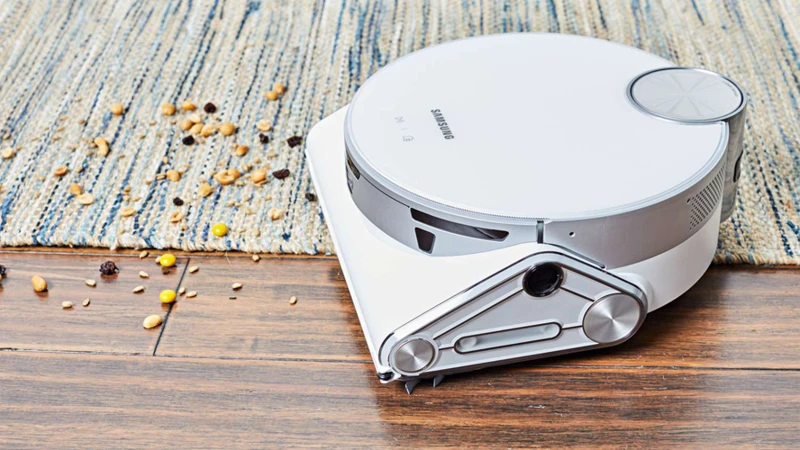
A smart vacuum cleaner’s dustbin is an essential part of the appliance that comes with numerous benefits. Unlike a traditional vacuum cleaner that uses a dustbag, a smart vacuum cleaner collects dirt, dust, and debris in a dustbin. Let’s explore the benefits of using a dustbin in a smart vacuum cleaner.
1. Eco-friendly: A smart vacuum cleaner’s dustbin is eco-friendly because it doesn’t require the use of disposable dustbags that end up in landfills. The use of dustbins also reduces plastic waste, which is great for the environment.
2. Cost-effective: One of the significant benefits of using a smart vacuum cleaner’s dustbin is that it’s a cost-effective alternative to dustbags. Dustbins are reusable, and you don’t have to keep buying replacements, unlike disposable dust bags.
3. Easy to use and maintain: Using a smart vacuum cleaner’s dustbin is incredibly convenient and straightforward. Unlike a dust bag that requires careful installation, a dustbin simply clicks into the vacuum cleaner. Dustbins are also accessible for users to empty, and they’re easy to clean, which saves time and money.
In contrast, using a dustbag means you have to keep an eye on it and change it regularly, depending on how often you vacuum your house. A user may also need to purchase specific dustbags for their vacuum cleaner, which adds to the overall cost of maintaining the appliance.
Using a smart vacuum cleaner’s dustbin is a more convenient and practical option than a dustbag. It’s eco-friendly, cost-effective, and easy to use and maintain. To ensure that you get the best performance from your smart vacuum cleaner’s dustbin, it’s essential to choose the right size, capacity, and filtration system. However, like any other appliance, it’s critical to clean and maintain the dustbin regularly to avoid potential issues. For smart vacuum cleaner’s dustbin cleaning tips, head to /smart-vacuum-dustbin-cleaning-hacks/. You can also learn how to empty your smart vacuum cleaner’s dustbin by visiting /empty-smart-vacuum-cleaner/.
1. Eco-friendly
In today’s world, there is a growing concern about the impact of our lifestyles on the environment. With the increase in pollution and waste, many people are turning towards eco-friendly habits and products. It’s no wonder that the eco-friendliness of a smart vacuum cleaner’s dustbin has become a popular topic of discussion. The dustbin’s design and features determine how it affects both the environment and your health. In this section, we’ll explore the benefits of having an eco-friendly dustbin in your smart vacuum cleaner, and how it can benefit you in the long run. For more tips on maintaining a clean and dust-free home, check out our smart vacuum cleaner dustbin tips or our troubleshooting guide on smart vacuum dustbins.
2. Cost-effective
One of the main benefits of a smart vacuum cleaner’s dustbin is that it is cost-effective in the long run. While traditional vacuum cleaners require the ongoing purchase of dust bags, smart vacuum cleaners with dustbins only require the initial investment.
Let’s take a closer look at the cost comparison between the two options:
Cost of Traditional Vacuum Cleaners with Dust Bags:
| Name | Price | Dust Bag Price | Annual Cost |
| — | — | — | — |
| Brand A | $100 | $5 per bag | $60 per year |
| Brand B | $150 | $10 per bag | $120 per year |
| Brand C | $200 | $15 per bag | $180 per year |
Cost of Smart Vacuum Cleaners with Dustbins:
| Name | Price |
| — | — |
| Brand D | $300 |
| Brand E | $350 |
| Brand F | $400 |
As seen in the table, the initial investment for a smart vacuum cleaner may be higher, but the cost savings in the long run make it a more cost-effective option. Additionally, many smart vacuum cleaners come with features such as automatic scheduling and mapping technology that add value beyond just the dustbin.
By investing in a smart vacuum cleaner with a dustbin, you can save money on ongoing dust bag purchases while also enjoying a more advanced cleaning technology. And don’t forget to check out our smart vacuum cleaner dustbin tips for even more cost-saving ideas.
3. Easy to Use and Maintain
When it comes to ease of use and maintenance, smart vacuum cleaners with dustbins have a clear advantage over traditional vacuum cleaners with dustbags. Here are some of the reasons why:
- No need to replace dustbags: With a smart vacuum cleaner’s dustbin, there is no need to constantly buy and replace dustbags, which can be a hassle and an added expense. Instead, the dustbin can be easily emptied and cleaned, ready to be used again.
- No loss of suction: As dust accumulates in a vacuum cleaner’s dustbag, the suction power can diminish. This means that you may have to frequently replace the bag just to ensure that the vacuum cleaner is functioning at full power. In contrast, with a dustbin, there is no loss of suction, ensuring a more efficient cleaning process.
- Easier to monitor: A dustbin is typically easier to monitor than a dustbag. With a dustbag, it can be difficult to tell when it is full, or if it needs to be replaced. With a dustbin, you can easily see when it needs to be emptied, making it a more user-friendly option.
- Simple cleaning process: When it comes time to clean your vacuum cleaner, a dustbin is typically easier to clean than a dustbag. Dustbags can be messy and difficult to clean without releasing dust into the air. On the other hand, a dustbin can be easily removed, emptied, and washed, resulting in a more thorough and hygienic cleaning process.
The ease of use and maintenance of a smart vacuum cleaner’s dustbin is a significant advantage over traditional vacuum cleaners with dustbags. With no need to constantly replace bags, no loss of suction, and a simple cleaning process, a dustbin makes using a smart vacuum cleaner more efficient and convenient.
Dustbin vs Dustbag: Which Is Better?
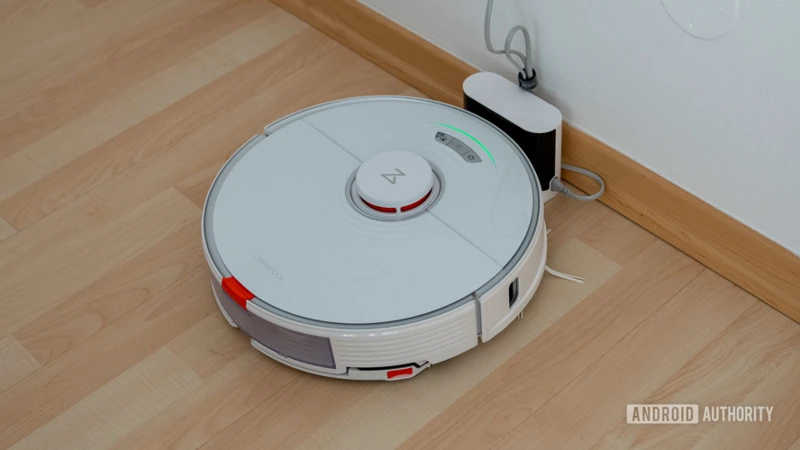
When it comes to traditional vacuum cleaners, one of the most common options for collecting dust and debris is a dustbag. These bags are usually made of paper or cloth and are replaced when they’re full or torn. On the other hand, smart vacuum cleaners use a dustbin that is designed to collect dirt and debris directly into a detachable container.
1. Capacity and Convenience
One of the main differences between a dustbin and a dustbag is their capacity. Dustbags come in different sizes, but they have a limited capacity and need to be replaced frequently. This can be inconvenient, especially if you have a large house or need to clean frequently. Dustbins, on the other hand, have a larger capacity and don’t need to be emptied as often, making them more convenient for daily use.
2. Hygiene and Health
Another consideration when choosing between a dustbin and a dustbag is hygiene and health. Dustbags have been known to release dust and allergens back into the air during the replacement process, which can be harmful to people with allergies or respiratory problems. Dustbins, on the other hand, have a sealed container that prevents the release of dust and allergens, making them a healthier option for your home.
3. Environmental Impact
When it comes to the environmental impact, dustbins are a better choice. Dustbags are usually disposable and need to be replaced frequently, creating more waste. They are also usually made from paper or synthetic materials that are not biodegradable. Dustbins, on the other hand, are reusable and create less waste, making them a more environmentally friendly choice.
The benefits of a smart vacuum cleaner’s dustbin outweigh those of a traditional vacuum cleaner’s dustbag. They have a larger capacity, are more hygienic, and have a smaller environmental impact. When choosing between the two, it’s important to consider your needs and preferences, but it’s clear that the smart vacuum cleaner’s dustbin is the way to go.
1. Capacity and Convenience
When it comes to choosing between a smart vacuum cleaner with a dustbin and a traditional vacuum cleaner with a dustbag, one of the most important considerations is capacity and convenience. The size and capacity of the dustbin or dustbag can ultimately determine how often you’ll need to empty or replace it, and how easy or difficult it will be to do so. Let’s take a closer look at the pros and cons of each option, and how to choose the best one for your needs.
2. Hygiene and Health
When it comes to choosing between a dustbin and a dustbag, hygiene and health should be one of your top considerations. A traditional vacuum cleaner with a dustbag is notorious for accumulating dust, dirt, and allergens inside the bag. Over time, this can lead to the proliferation of harmful bacteria and molds.
With a smart vacuum cleaner’s dustbin, however, you can avoid these health hazards as it doesn’t hold onto dust for long periods of time. This is because dustbins are made of materials that are easy to clean, and can be emptied and washed frequently. They also have better filtration systems that can trap even the smallest dust particles, which is important for people suffering from allergies or asthma.
In contrast, dustbags can be difficult to clean, and if not changed regularly, can become breeding grounds for bacteria and other pathogens. Emptying a dustbag is a messy and time-consuming process, which can expose you to dust and allergens.
Also, since dustbins can be easily washed and reused, they are more eco-friendly than disposable dustbags. Reusing a dustbin reduces the amount of waste generated by household cleaning and contributes to a healthier environment.
A smart vacuum cleaner’s dustbin provides a more hygienic and healthy cleaning solution than a traditional dustbag. It is easy to clean, has superior filtration systems, and is more environmentally friendly. If you’re concerned about your family’s health and the environment, then choosing a smart vacuum cleaner with a dustbin is a no-brainer.
3. Environmental Impact
When it comes to environmental impact, the choice between a smart vacuum cleaner’s dustbin and a traditional vacuum cleaner’s dustbag can make a significant difference. Let’s take a look at some factors that highlight the environmental benefits of using a dustbin:
| Factor | Smart Vacuum Cleaner Dustbin | Traditional Vacuum Cleaner Dustbag |
|---|---|---|
| Material | The dustbin is generally made of durable plastic, which can be recycled at the end of its life. | The dustbag is made of paper or synthetic materials that are not biodegradable and difficult to recycle. |
| Waste | The use of a dustbin leads to less waste as it can be emptied and reused countless times before being replaced. | The use of a dustbag produces a significant amount of waste as they must be disposed of after each use. |
| Energy | The use of a dustbin involves less energy compared to the production, transportation, and disposal of dustbags. | The production, transportation, and disposal of dustbags require a lot of energy and contribute to carbon emissions. |
The use of a smart vacuum cleaner’s dustbin can positively impact the environment by reducing waste, energy consumption, and carbon emissions. It’s an eco-friendly and sustainable choice that can help preserve our planet for future generations.
How to Choose the Best Dustbin for Your Smart Vacuum Cleaner?
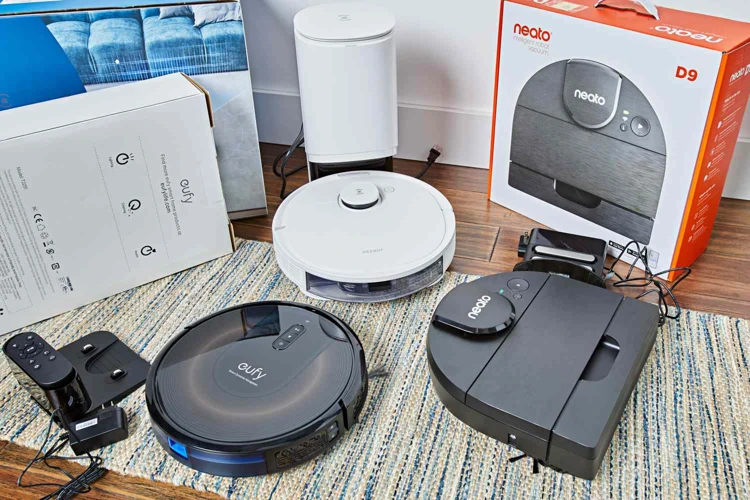
When it comes to choosing the best dustbin for your smart vacuum cleaner, there are a few factors that you need to consider. A dustbin is an essential component of a smart vacuum cleaner, as it collects all the dust and debris that the cleaner picks up during its cleaning cycle. Here are some things to keep in mind when choosing the right dustbin for your smart vacuum cleaner:
1. Size and Capacity: One of the first things to consider when choosing a dustbin for your smart vacuum cleaner is its size and capacity. The size of the dustbin will determine how much dirt and debris it can hold before needing to be emptied. If you have a bigger house or frequently entertain guests, then you may need a dustbin with a larger capacity to avoid the need for frequent emptying. On the other hand, if you have a smaller home or apartment, a dustbin with a smaller capacity may be sufficient.
2. Filtration System: Another important factor to consider when choosing a dustbin is the filtration system. A good filtration system will ensure that the dust and debris are trapped inside the dustbin and do not escape back into the air. This is especially important if you or someone in your household has allergies or respiratory issues. Look for a dustbin with a HEPA filter which traps the tiny particles of dust and allergens.
3. Cleaning and Maintenance: It’s also important to consider the cleaning and maintenance of the dustbin. You want a dustbin that is easy to clean, as it will need to be emptied and cleaned after every use. A dustbin that is too complicated to clean and maintain can be a nuisance and may deter you from using your smart vacuum cleaner regularly. Look for a dustbin that is easy to remove and clean, and one that does not require any complicated disassembly or cleaning procedures.
When choosing the best dustbin for your smart vacuum cleaner, it’s important to consider factors such as size and capacity, filtration system, and cleaning and maintenance. By keeping these factors in mind, you’ll be able to choose a dustbin that meets your needs and ensures that your smart vacuum cleaner operates efficiently and effectively.
1. Size and Capacity
When it comes to choosing the best dustbin for your smart vacuum cleaner, size and capacity should be at the top of your mind. This is because the size and capacity of the dustbin determine how much dust and debris your vacuum can hold before needing to be emptied. As such, you need to take your time and consider various factors to ensure you get the right size and capacity for your needs. Let’s delve deeper into how you can do this.
2. Filtration System
When it comes to choosing the best dustbin for your smart vacuum cleaner, the filtration system is one of the most important factors to consider. A good filtration system not only ensures that the dustbin collects and retains more dust and debris, but it also helps to improve the air quality in your home. Here are some of the key factors to consider when it comes to the filtration system of your smart vacuum cleaner’s dustbin:
- Type of Filtration: There are different types of filtration systems that you can choose from depending on your needs. The most common types include foam filters, HEPA filters, and multi-layer filters. HEPA filters are the most effective at trapping dust, allergens, and microscopic particles, making them a great choice for those with allergies or respiratory issues.
- Filtration Efficiency: The filtration efficiency is measured by the percentage of particles that the filter can trap. A high-efficiency filter will capture more particles and ensure that fewer particles are released back into the air. Look for a filter with a high filtration efficiency rating for the best performance.
- Filter Maintenance: The maintenance of the filter is also an important consideration. Some filters are washable and reusable, while others need to be replaced after a certain period of time. It is important to choose a filter that is easy to maintain and replace to ensure that your smart vacuum cleaner continues to work effectively.
Choosing the right filtration system for your smart vacuum cleaner’s dustbin is essential for both cleaning performance and indoor air quality. Consider the type of filtration, filtration efficiency, and maintenance requirements when choosing the best dustbin for your needs.
3. Cleaning and Maintenance
One of the biggest advantages of a smart vacuum cleaner with a dustbin is that it is easy to clean and maintain. Unlike traditional vacuum cleaners that require frequent replacement of dust bags, a dustbin can be emptied and cleaned quickly and easily.
Here are some tips on how to keep your smart vacuum cleaner’s dustbin clean:
| Step | Instruction |
|---|---|
| Step 1 | Turn off the vacuum cleaner and unplug it from the power outlet to ensure safety. |
| Step 2 | Remove the dustbin from the vacuum cleaner by pressing the release button, which is usually located on the handle or the top of the unit. |
| Step 3 | Hold the dustbin over a trash can and firmly press the release button to open the bottom of the dustbin. |
| Step 4 | Empty the contents of the dustbin into the trash can and use a soft-bristled brush or cloth to remove any remaining debris from the inside of the dustbin. |
| Step 5 | Wash the dustbin with warm soapy water and rinse thoroughly to remove any residue or build-up. |
| Step 6 | Dry the dustbin completely before reattaching it to the vacuum cleaner. |
| Step 7 | If your smart vacuum cleaner has a replaceable filter, check the manual for instructions on how to remove and clean or replace the filter as needed. |
By following these simple steps, you can ensure that your smart vacuum cleaner is always running at peak performance and that the dustbin remains clean and odor-free. Additionally, some smart vacuum cleaners may come with a self-cleaning feature that automatically disposes of dust and debris, reducing the need for manual cleaning even further.
How to Clean and Maintain Your Smart Vacuum Cleaner’s Dustbin?
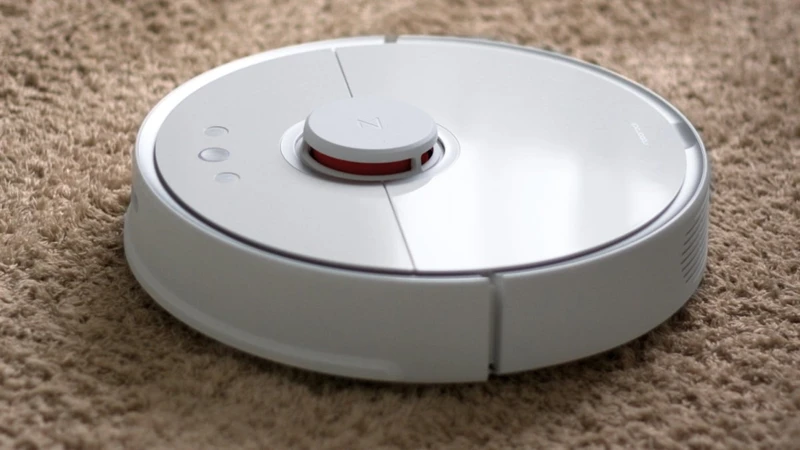
Keeping your smart vacuum cleaner’s dustbin clean is critical for ensuring efficient and effective cleaning. Not only does a dirty, clogged dustbin reduce suction power and cleaning performance, but it can also harbor germs and bacteria, negatively impacting your health and indoor air quality. Here are some steps to clean and maintain your smart vacuum cleaner’s dustbin:
1. Emptying and Cleaning the Dustbin: To empty the dustbin, first, turn off the smart vacuum cleaner and unplug it from the power supply. Locate the release button for the dustbin and remove it from the vacuum cleaner body. Empty the contents of the dustbin into a trash can and use a soft-bristled brush or cloth to remove any dust or debris that remains inside. You can also rinse the dustbin with water, but be sure to dry it completely before reinserting it into the vacuum cleaner.
2. Replacing or Cleaning Filters: The filters in the dustbin can become clogged over time, reducing suction power and airflow. Refer to your smart vacuum cleaner’s manual to determine if the filters are washable or need to be replaced. If they are washable, remove them from the dustbin and rinse them with water. Allow the filters to dry completely before reinstalling them. If the filters need to be replaced, purchase the appropriate replacement filters and install them according to the manufacturer’s instructions.
Regularly cleaning and maintaining your smart vacuum cleaner’s dustbin and filters will not only keep your home clean but also prolong the life of your vacuum cleaner. Be sure to follow the manufacturer’s guidelines and recommendations for cleaning and maintenance to ensure the best performance from your smart vacuum cleaner.
1. Emptying and Cleaning the Dustbin
Maintaining the cleanliness of your smart vacuum cleaner’s dustbin is crucial for ensuring it continually performs at its best. A full or dirty dustbin can impact the suction power and may even cause damage to the motor. It’s essential to empty and clean the dustbin regularly to prevent any issues from occurring. In this section, we will guide you through the steps of properly emptying and cleaning the dustbin using easy-to-follow tips and techniques. Whether you’re a seasoned smart vacuum cleaner owner or a beginner, we’ve got you covered. So, let’s get started!
2. Replacing or Cleaning Filters
As with any vacuum cleaner, the filters in a smart vacuum cleaner’s dustbin require regular cleaning or replacement to maintain its efficiency and suction power. The frequency of cleaning or replacing the filters depends on the frequency and intensity of use of the vacuum cleaner, as well as the type of filters used.
There are several types of filters available for smart vacuum cleaners. The most common types are HEPA filters, foam filters, and mesh filters. HEPA filters are known for their ability to trap small particles, such as dust, pollen, and pet dander. Foam filters are washable and reusable, while mesh filters are more traditional and need to be replaced regularly.
Replacing Filters: It is important to follow the manufacturer’s instructions for replacing filters in a smart vacuum cleaner to ensure that the vacuum functions correctly. Most smart vacuum cleaners have easily accessible filter compartments that can be opened with a single button click or twist. The old filter can then be removed and the new one securely fitted into place.
Cleaning Filters: Foam filters are a popular choice for those looking for a more eco-friendly and cost-effective option that can be reused multiple times. To clean a foam filter, it should be removed from the vacuum cleaner and rinsed in warm water until the water runs clear. After rinsing, the filter should be left to air dry completely before reinserting it back into the vacuum cleaner. In some cases, a gentle soap may be used to remove stubborn dirt and grime.
Mesh filters can also be cleaned but are not reusable like foam filters. They should be replaced every few months or when they become visibly dirty. HEPA filters are not washable and should be replaced every six months to maintain the suction power of the vacuum cleaner.
| Filter Type | How to Clean/Replace | Frequency |
|---|---|---|
| HEPA Filters | Replace | Every 6 months |
| Foam Filters | Clean with warm water and soap | Every few months, depending on usage |
| Mesh Filters | Replace | Every few months, depending on usage |
It is important to clean or replace the filters regularly to keep your smart vacuum cleaner functioning at its maximum ability. To determine the appropriate frequency for cleaning or replacing the filters, refer to the manufacturer’s instructions for the specific vacuum cleaner model you own.
FAQs
Frequently Asked Questions About Smart Vacuum Cleaner Dustbins
1. How often should I empty the dustbin?
The frequency of emptying the dustbin of your smart vacuum cleaner depends on the size of the dustbin and the amount of dirt and debris it picks up. You should generally empty the dustbin when it starts getting full to maintain the suction power of your vacuum and prevent any potential damage to it. If you have pets or children, you may need to empty it more frequently.
2. Can I reuse disposable dust bags?
No, you cannot reuse disposable dust bags. Disposable dust bags are designed for a single-use and can’t be washed or cleaned. If you try to reuse them, it can impact the performance of the vacuum cleaner and cause it to lose suction power.
3. Do all smart vacuum cleaners have dustbins?
No, not all smart vacuum cleaners have dustbins. Some models come with disposable dust bags that need to be replaced when they are full. However, modern smart vacuum cleaners often have dustbins since they are more eco-friendly, cost-effective, and convenient to use and maintain.
A smart vacuum cleaner dustbin has numerous benefits compared to traditional vacuum cleaners with disposable dust bags. It is eco-friendly, cost-effective, and easy to use and maintain. When choosing a smart vacuum cleaner with a dustbin, consider the size and capacity, filtration system, and maintenance requirements. Finally, remember to empty and clean the dustbin of your smart vacuum cleaner regularly to keep it in good condition and maintain optimal performance.
1. How often should I empty the dustbin?
One of the most common questions that come to mind when using a smart vacuum cleaner is, “How frequently do I need to empty the dustbin?” It is a valid concern as the efficiency of the vacuum cleaner depends on its dustbin capacity. It is also a hygiene factor as a full dustbin can cause spillovers that lead to dust and debris landing back on your floors. In this section, we will explore the factors that determine how often you should empty the dustbin and offer some insights to make the most out of your smart vacuum cleaner.
2. Can I reuse disposable dust bags?
Many people choose traditional vacuum cleaners that come with disposable dust bags, but wonder if they can reuse them. While reusing the disposable dust bags might sound like a way to cut costs or reduce waste, it’s actually not recommended. Here are a few reasons why:
- 1. Decreased Efficiency: When you reuse a disposable dust bag, the pores of the material become clogged with fine dust particles, reducing the bag’s efficiency. This makes your vacuum cleaner work harder, reducing suction power, and ultimately making it less effective in picking up dirt and debris from your floors.
- 2. Hygiene Concerns: Dust bags that are not disposed of after use can become a breeding ground for bacteria and other microorganisms. Reusing them could spread germs and particles of dust and allergens around your home, which can be harmful to you and your family’s health.
- 3. Risk of Damage: When you reuse a disposable dust bag, there’s a risk of it tearing or breaking. As a result, dust and debris can enter the vacuum cleaner’s motor or other parts, causing damage and breakdowns, and potentially leading to costly repairs.
It’s not recommended to reuse disposable dust bags. Instead, it’s best to dispose of them after use and replace them with new bags to ensure that your vacuum cleaner works efficiently and to maintain good hygiene in your home.
3. Do all smart vacuum cleaners have dustbins?
Smart vacuum cleaners are becoming increasingly popular due to their ability to clean floors effectively with minimal human intervention. One of the key features of a smart vacuum cleaner is its dustbin, which is responsible for collecting dust and debris from the floor. But do all smart vacuum cleaners have dustbins?
To answer this question, let’s take a look at the two main types of vacuum cleaners: traditional vacuum cleaners and smart vacuum cleaners.
Traditional vacuum cleaners typically use a dustbag to collect dirt and debris. The dustbag must be replaced periodically, and it can be messy and inconvenient to empty. Smart vacuum cleaners, on the other hand, use a dustbin, which is typically easier to empty and clean.
While most, if not all, smart vacuum cleaners come equipped with a dustbin, it’s important to note that not all dustbins are created equal. Some smart vacuum cleaners may have smaller or larger dustbins than others. Some may have more advanced filtration systems to help trap allergens and other particles.
To help you choose the best dustbin for your smart vacuum cleaner, consider the following factors:
| Factor | Considerations |
|---|---|
| Size and capacity | Choose a dustbin that is large enough to handle the amount of dirt and debris in your home. If you have a large home with multiple rooms, you may want a larger dustbin. However, keep in mind that a larger dustbin may also make the vacuum cleaner heavier and more difficult to maneuver. |
| Filtration system | Look for a dustbin with a high-quality filter to trap allergens and other particles. HEPA filters are especially effective at trapping small particles and can help improve indoor air quality. |
| Cleaning and maintenance | Choose a dustbin that is easy to empty and clean. Some dustbins may have removable parts that can be washed, while others may require more intensive cleaning. Consider how often you will need to clean the dustbin and choose one that is easy to maintain. |
While not all vacuum cleaners come equipped with a dustbin, most smart vacuum cleaners do use a dustbin instead of a dustbag. When choosing a dustbin for your smart vacuum cleaner, consider factors such as size, filtration, and maintenance to ensure that it meets your cleaning needs.
Conclusion
In conclusion, the benefits of a smart vacuum cleaner with a dustbin are clear. Not only are they eco-friendly and cost-effective, but they are also easy to use and maintain. The dustbin provides a convenient and hygienic way to collect and dispose of dirt and debris.
When compared to traditional vacuum cleaners with dustbags, the superiority of a dustbin becomes even more apparent. The greater capacity and convenience of a dustbin mean less time and effort spent on emptying and replacing bags. In addition, the environmental impact of disposable dustbags can be significant.
When choosing the best dustbin for your smart vacuum cleaner, consider factors such as size and capacity, filtration system, and cleaning and maintenance. It is important to choose a dustbin that suits your needs and lifestyle, as well as one that is easy to maintain and keep clean.
To maintain your smart vacuum cleaner’s dustbin, be sure to regularly empty and clean it, as well as replace or clean filters as needed. By following these simple steps, you can ensure optimal performance and hygiene from your smart vacuum cleaner.
In summary, a smart vacuum cleaner with a dustbin offers numerous benefits over traditional vacuum cleaners with dustbags. Whether you prioritize environmental impact, convenience, or cost-effectiveness, a dustbin-equipped smart vacuum cleaner is a wise choice for any household.
Frequently Asked Questions
1. How does the dustbin in a smart vacuum cleaner work?
The dustbin in a smart vacuum cleaner uses a suction system to collect and store dirt and debris. It is located inside the vacuum and can be easily removed for cleaning and emptying.
2. What are the benefits of using a smart vacuum cleaner with a dustbin?
Smart vacuum cleaner with a dustbin is eco-friendly, cost-effective, and easy to use and maintain. It also eliminates the need for disposable dust bags, making it a more sustainable option.
3. How does a dustbin compare to a dust bag in terms of capacity and convenience?
A dustbin has a larger capacity compared to the dustbag, which needs to be frequently replaced. It is also more convenient as it can be easily emptied and cleaned without the need to purchase additional dust bags.
4. What are the hygiene and health benefits of using a dustbin in a smart vacuum cleaner?
A dustbin in a smart vacuum cleaner helps maintain cleanliness and hygiene inside your home by preventing the spread of allergens and dust mites. It is also more hygienic as there is no contact with the collected dirt and debris during emptying.
5. How does a dustbin compare to a dustbag in terms of environmental impact?
A dustbin is more environmentally friendly compared to a disposable dust bag, which adds to the waste in landfills. By using a dustbin, you can avoid the use of disposable bags, making your cleaning routine more sustainable.
6. What factors should I consider when choosing a dustbin for my smart vacuum cleaner?
You should consider the size and capacity of the dustbin, the filtration system, and the ease of cleaning and maintenance when choosing a dustbin for your smart vacuum cleaner.
7. How often should I empty the dustbin in my smart vacuum cleaner?
The frequency of emptying the dustbin depends on the amount of dirt and debris that has been collected. As a general rule of thumb, it is recommended to empty the dustbin after every use, especially if you have pets or children.
8. Can I reuse disposable dust bags in my smart vacuum cleaner?
No, disposable dust bags are not designed to be reused. Reusing a disposable dust bag can affect the filtration system of your smart vacuum cleaner, reducing its efficiency and potentially damaging the vacuum.
9. Do all smart vacuum cleaners have dustbins?
No, not all smart vacuum cleaners come with dustbins. Some models may still use disposable dust bags, while other models may have both options available.
10. How do I clean and maintain the dustbin in my smart vacuum cleaner?
Regularly empty and clean the dustbin of your smart vacuum cleaner after every use. You should also replace or clean the filters on a routine basis to ensure the proper functioning of the vacuum cleaner.

